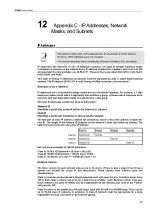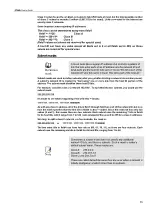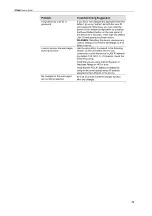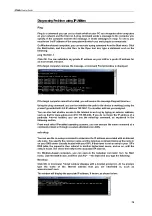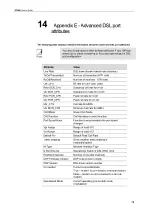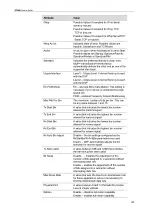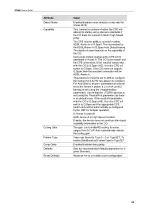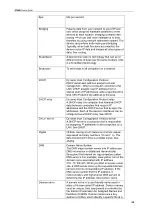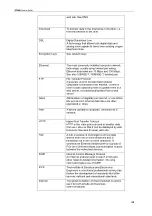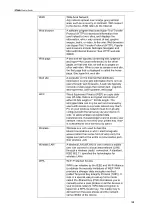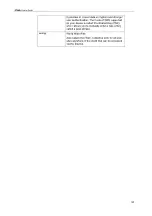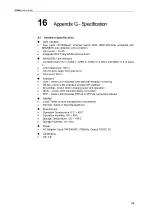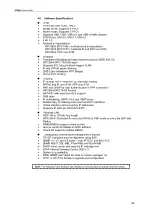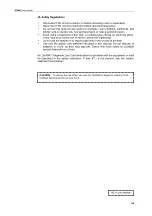
X7968r
User’s Guide
15
Appendix F - Glossary
Term
Description
802.11
A family of specifications for wireless
LANs developed by a working group of the
IEEE. This inan Ethernet protocol, often called
Wi-Fi.
10BASE-T
A designation for the type of wiring used by
Ethernet networks with a data rate of 10 Mbps.
Also known as Category 3 (CAT 3) wiring.
See
data rate, Ethernet
.
100BASE-T
A designation for the type of wiring used by
Ethernet networks with a data rate of 100 Mbps.
Also known as Category 5 (CAT 5) wiring. See
data rate, Ethernet
.
ADSL Asymmetric
Digital Subscriber Line
The most commonly deployed "flavor" of
DSL for
home users is asymmetrical DSL. The term
asymmetrical refers to its unequal data rates for
downloading and uploading (the download rate is
higher than the upload rate). The asymmetrical
rates benefit home users because they typically
download much more data from the Internet than
they upload.
Analog
An analog signal is a signal that has had its
frequency modified in some way, such as by
amplifying its strength or varying its frequency, in
order to add information to the signal. The voice
component in DSL is an analog signal. See
digital
.
ATM Asynchronous
Transfer
Mode
A standard for high-speed transmission of data,
text, voice, and video, widely used within the
Internet. ATM data rates range from 45 Mbps to
2.5 Gbps. See
data rate
.
Authenticate
To verify a user’s identity, such as by prompting for
a password.
Binary
The "base two" system of numbers that uses only
two digits, 0 and 1, to represent all numbers. In
binary, the number 1 is written as 1, 2 as 10, 3 as
11, 4 as 100, etc. Although expressed as decimal
numbers for convenience, IP addresses in actual
use are binary numbers; e.g., the IP address
209.191.4.240 is
11010001.10111111.00000100.11110000 in binary.
See bit, IP address, network mask.
Bit
Short for "binary digit," a bit is a number that can
have two values, 0 or 1. See binary.
83




